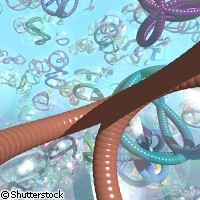Carbon nanotubes show promise as 'smart' material for brain repair
EU-funded scientists in Italy and Switzerland have demonstrated that carbon nanotubes improve nerve responsiveness, potentially making them good candidates for the design of 'smart materials' for biomedical applications such as brain repair. The study, published in the journal Nature Nanotechnology, was funded in part by the Sixth Framework Programme (FP6) as part of the NEURONANO ('Towards new generations of neuro-implantable devices: engineering neurons/carbon nanotubes integrated functional units') project. NEURONANO was funded with approximately EUR 1.8 million in the Thematic area 'Nanotechnologies and nanosciences' of FP6. The project's main objective was to integrate carbon nanotubes with other technologies to develop biochips that can help repair damaged central nervous system tissues. Carbon exists in many forms, the best-known of which are diamond and graphite. Recently, much attention has focused on carbon nanotubes, extraordinarily strong cylindrical carbon molecules with unique electrical properties. In this latest research, scientists looked at the relationship between the electrical properties of carbon nanotubes and the way nerves are excited in the central nervous system. They measured the electrical activity of single nerve cells, used electron microscopy analysis and applied theoretical modelling to see how nanotubes affected nerve response. Their results show that carbon nanotubes actually improve neuron responsiveness. The carbon nanotubes, the authors explain, form tight contacts with the membranes of nerve cells. This might allow them to create 'electrical shortcuts' between one side of the nerve cell and the other, making messages travel more quickly. A mathematical model proposed by the researchers explains the phenomenon, and shows its consequences. The results are exciting because they represent significant progress in addressing what Dr Henry Markram of Ecole Polytechnique Fédérale de Lausanne (EPFL) in Switzerland calls the 'three fundamental obstacles to developing reliable neuroprosthetics': creating an interface between nerve tissue and a device; understanding how best to stimulate the neural tissue; and figuring out which nerve signals should be recorded by the device so that it can make an automatic and appropriate decision. According to Dr Markram, 'The new carbon nanotube-based interface technology discovered, together with state of the art simulations of brain-machine interfaces, is the key to developing all types of neuroprosthetics: sight, sound, smell, motion, vetoing epileptic attacks, spinal bypasses, as well as repairing and even enhancing cognitive functions.' Dr Michele Giugliano of the EPFL (now at the University of Antwerp in Belgium) said, 'This result is extremely relevant for the emerging field of neuro-engineering and neuroprosthetics.' Dr Giugliano and co-lead-author Dr Laura Ballerini of the University of Trieste in Italy speculate that the nanotubes could be used as a building block for future 'electrical bypass' systems to treat traumatic brain injury, or for novel electrodes that would replace metal parts of deep-brain-stimulation devices currently used to treat Parkinson's disease and severe depression. Carbon nanotubes have recently been used in the engineering of mechanical memory; nanoscale electric motors; a hydrogen sensor; touch-screens and flexible displays. A radio receiver consisting of a single nanotube was developed in 2007, and in 2008 a sheet of nanotubes was used to operate a loudspeaker. Research into their use in energy storage has also shown interesting results. According to the authors, the precise mechanisms of the effect of nanotubes on nerve cells are not yet totally clear; however, the findings do indicate that nanotubes might affect neuronal information processing. 'Although simplified,' they conclude, 'these considerations represent the first attempt at linking electrical phenomena in nanomaterials to neuronal excitability and may allow one to predict or engineer the interactions between nanomaterials and neurons'.
Countries
Switzerland, Italy



